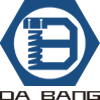Chemical anchor bolt is a commonly used fixed connection material, which has many advantages in the fields of architecture, structural engineering and industry.
1. Strong performance: chemical anchor bolt can provide strong fixation force, can firmly fix objects in concrete, brick walls and other substrates. They can withstand a large amount of tension, shear and torque, providing a lasting fixing effect.
two。. Strong adaptability: chemical anchor bolt is suitable for all kinds of substrates, such as concrete, brick wall, stone and so on. They can form reliable bonding on different substrate surfaces and are suitable for different application scenarios.
3. Simple construction: compared with the traditional mechanical anchor bolt, the construction of chemical anchor bolt is more simple. The chemical anchor bolt can be fixed simply by injecting the chemical anchor bolt into the pre-drilled hole and waiting for a certain period of time for the chemical anchor bolt to solidify.
4. High seismic performance: chemical anchor bolt has good seismic performance and can withstand external impact forces such as earthquake. This makes them widely used in buildings and structural projects that require anti-seismic requirements.
5. Corrosion resistance: chemical anchor bolts are usually made of corrosion resistant materials, such as stainless steel or acid and alkali resistant materials. This enables them to be used in harsh environments for a long time and has good weather resistance and corrosion resistance.
6. Good concealment: the chemical anchor bolt usually does not protrude on the surface of the substrate after being fixed, which makes the fixed connection more beautiful and reduces the impact on the appearance of the building.
Generally speaking, chemical anchor bolt has the advantages of strong performance, strong adaptability, simple construction, high seismic performance, good corrosion resistance and good concealment. These characteristics make chemical anchor bolt a commonly used fixed connection material in building and structural engineering.
Post time: Jun-27-2023
